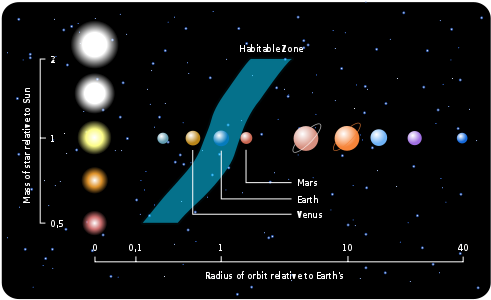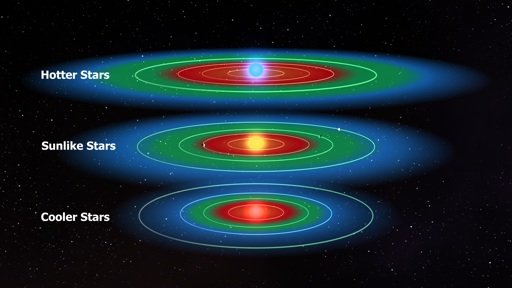The Habitable Zone
In the chase for life outside the Earth, space experts are quick to spot exoplanets in the "habitable zone," — the district around a star where fluid water can exist on a planet.
While most examination about the habitable zone has zeroed in on a star's brilliance (as temperature directs whether water on a planet could be liquid, ice or gas), new exploration is showing that this is an incredibly streamlined and guileless picture. The genuine test for whether a planet could have life may, truth be told, rest in the most exhausting of gases: nitrogen.
Envision if Earth was the place where Pluto is. The Sun would be scarcely noticeable (about the size of a pea) and Earth's sea and quite a bit of its climate would freeze. Then again, if Earth had Mercury's spot, it would be excessively near the Sun and its water would frame a steam environment, rapidly bubbling off.
The distance Earth circles the Sun is perfect for water to stay in liquid. This separation from the Sun is known as the habitable zone, or the Goldilocks zone. Rocky exoplanets found in the habitable zones of their stars, are almost certain objectives for recognizing liquid water on their surfaces. For what reason is liquid water so significant? Life on Earth began in water, and water is an important element forever (as far as we might be concerned).
Water is a definitive dissolvable and it's the place where all the interesting life-sustaining chemical reactions can occur. And keeping in mind that water — the recognizable blend of two element hydrogen and oxygen — is the most well-known atom known to man, it's shockingly just once in a while in a liquid state reasonable forever.
Most water is either frozen, secured up comets, on huge ice sheets covering freezing universes or caught in a gas, dissipated by the extreme warmth siphoned out by stars. Liquid water is extremely uncommon, discovered distinctly in certain unique conditions.
In the picture beneath, the blue band addresses the area of the habitable zone. Notice, true to form, that for low-mass, cool stars the area is nearer to the star, and for higher mass, more blazing stars, the district is more inaccessible from the star. In this specific outline, the Earth gives off an impression of being definitely in the center of the habitable zone for the Sun.

Another representation of the habitable zone is appeared underneath. The red district is too warm, the blue area excessively cool, and the green locale is perfect for liquid water. Since it tends to be depicted thusly, in some cases it is alluded to as the "Goldilocks Zone," as well.

The size of the habitable zone unmistakably relies upon the luminosity of the star, which decides the balance temperature of the planet. Be that as it may, present day models for the scope of the habitable zone consider more unpretentious impacts, for example, the impact of the carbonate-silicate cycle in managing carbon dioxide in a planet's climate. Work on this specific cycle by Penn State researchers, including Professor James Kasting(link is outer), has shown that the habitable zone broadens farther from a star than initially expected. On account of the Solar System, the Earth is within this amended HZ close to its internal edge, and Mars is right outside of the external edge. Ravi Kopparapu keeps a state-of-the-art representation of the habitable zone that incorporates the entirety of the known exoplanets that lie inside their parent's HZ.
At the point when we examined stellar evolution, you saw the transformative tracks for stars in the HR graph: stars don't keep up similar tone and luminosity over their whole lifetimes. At the point when the star starts stable hydrogen combination on the Main Sequence, it will lie in one specific area in the HR graph, known as the Zero Age Main Sequence, or ZAMS. As the star ages, however, it will, all in all, chill a piece and become more brilliant. As its luminosity changes, the area of its habitable zone will change, as well. You can characterize a continuously habitable zone (or CHZ) as the area wherein liquid water can exist over the whole Main Sequence lifetime of a star.
One final note about the CHZ. Review that, in our Solar System, the moons Europa and Titan are viewed as areas where life may exist. The two moons are far outside of the CHZ around our Sun, however. Along these lines, the CHZ is a fascinating area to study for planets around different stars that may uphold life, it isn't the lone area in a planetary framework that may uphold life.
My sincere gratitude to @krytodenno, @seo-boss, @earnxtreme, @chorock, @justyy and all my colleagues for their support.